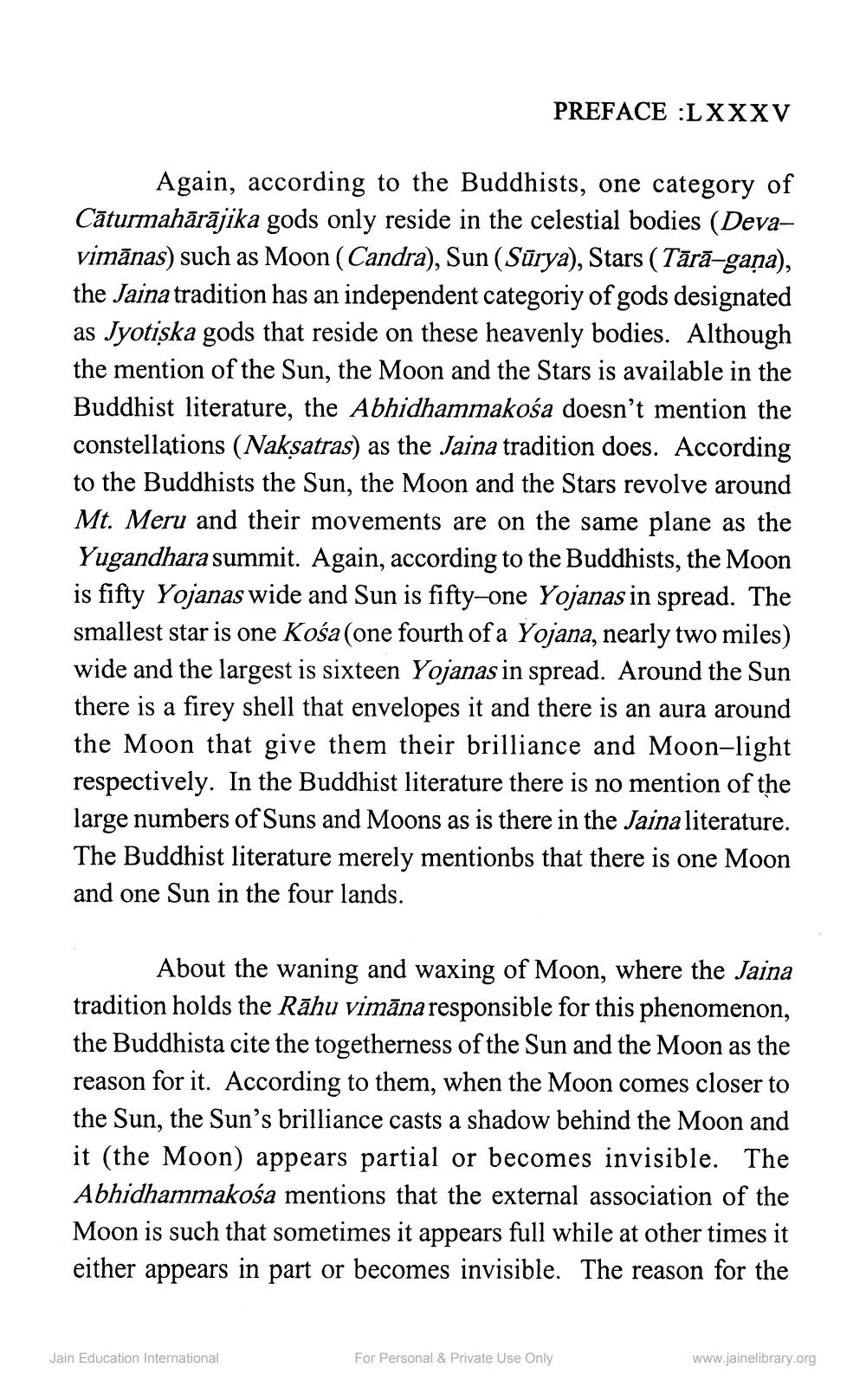________________
PREFACE:LXXXV
Again, according to the Buddhists, one category of Caturmahārājika gods only reside in the celestial bodies (Devavimānas) such as Moon (Candra), Sun (Surya), Stars (Tārā-gaṇa), the Jaina tradition has an independent categoriy of gods designated as Jyotiska gods that reside on these heavenly bodies. Although the mention of the Sun, the Moon and the Stars is available in the Buddhist literature, the Abhidhammakośa doesn't mention the constellations (Naksatras) as the Jaina tradition does. According to the Buddhists the Sun, the Moon and the Stars revolve around Mt. Meru and their movements are on the same plane as the Yugandhara summit. Again, according to the Buddhists, the Moon is fifty Yojanas wide and Sun is fifty-one Yojanas in spread. The smallest star is one Kośa (one fourth of a Yojana, nearly two miles) wide and the largest is sixteen Yojanas in spread. Around the Sun there is a firey shell that envelopes it and there is an aura around the Moon that give them their brilliance and Moon-light respectively. In the Buddhist literature there is no mention of the large numbers of Suns and Moons as is there in the Jaina literature. The Buddhist literature merely mentionbs that there is one Moon and one Sun in the four lands.
About the waning and waxing of Moon, where the Jaina tradition holds the Rāhu vimāna responsible for this phenomenon, the Buddhista cite the togetherness of the Sun and the Moon as the reason for it. According to them, when the Moon comes closer to the Sun, the Sun's brilliance casts a shadow behind the Moon and it (the Moon) appears partial or becomes invisible. The Abhidhammakośa mentions that the external association of the Moon is such that sometimes it appears full while at other times it either appears in part or becomes invisible. The reason for the
Jain Education International
For Personal & Private Use Only
www.jainelibrary.org




